On November 1st, 2016 Kerala celebrated its 60th birthday, which means ‘Shashti Poorthi’ in Malayalam. Nicknamed – God’s own country, Kerala is the most literate state of India, economically rich, one among the cleanest states and people are culturally well-behaved. It’s known to everyone Kerala has been a queen in trades among many foreign countries since old centuries, and many travellers were attracted to the beautiful state for its spices like pepper, cardamom etc. Many foreign travelers have visited this state at different eras and have also recorded their views of Kerala in their travelogues.
It’s believed that human life started here in the modern Stone Age. We do resort on folklores and legends to know more about Kerala culture. Some conclusions are also drawn from books written during each era, old coins, historic monuments and remains etc. Since BC 400, more than 50 famous foreign travellers have visited the state. Their brief notes on Kerala have also helped to know what culture existed here when they paid a visit, and what their opinion about the social life and culture is then. Most of these notes are based on their views, and very often they were surprised by many ready available plants and fruits of Kerala such as jack fruit,
different types of banana,
plantain leaf for serving food etc, which form an integral part of Kerala culture and tradition that exists till now.
What have foreigners told in their travelogues about our small state – Kerala? Through this column I would like to throw light on a few interesting notes made by such foreign travelers centuries ago.
The land without tailors and sandals
European traveller John of Montecorvino and Marco Polo from Venice visited Kerala in the 13thcentury. Both have something to tell about costumes of Keralities then. Both men and women use less clothing and they are bare footed. For the same reason there is no need of tailors and shoemakers here – that’s what they told about people of Kerala then. They also recorded that till age 8 kids of both sexes are seen naked.
You can travel across the state, but can never find a tailor. Men never wear shirt or coat. They hang a piece of cloth around the waist. Costumes of kings are not too different, except that he wears expensive clothes and a diamond necklace tied in a silk thread around the neck. He also wears expensive diamond bangles and anklets. The king also uses diamond rings and wear in fingers of both hands and legs – reports the travellers who visited Kerala in the 13th century.
The strength of black gold
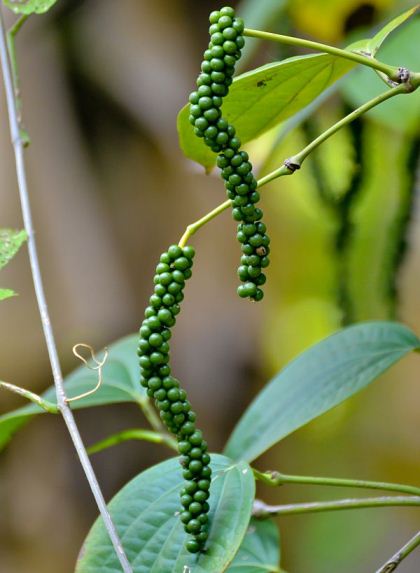
Pepper Climber
Pepper and other spices played a major role in the commercial development and trade relations of the state centuries ago. Many foreigners have reached Kerala solely for the purpose of pepper. Kerala had the full monopoly and control of pepper trade then, though it later lost its monopoly to many countries which started cultivating the spice in their respective nations.
Pepper became a popular spice across the globe before 3000 BC. Pepper was very precious then. Since Pliny, who visited Kerala in 1st century AD to many travellers later, they have always given importance to pepper in their recorded writings. During summer, Europeans used to preserve cattle meat using pepper to use in winter and that procedure was started centuries ago. It’s recorded that queens of Egypt used pepper since 1500 BC, and the pepper reached from Kerala!
Pepper is nicknamed as ‘Yavana Priya’ by Sanskrit poems, as this spice is very much liked by Yavanar (the word to describe group of western countries, most preferably Greeks, Romans, Persians and Arabians) who gave pepper a status equal to gold and silver.
When John of Montecorvino visited Kerala in the 13th century, he has also described Kerala’s trade relations with China, and pepper was a major trade item. He recorded that Chinese used to collect pepper from Kerala on daily basis. That shows the importance of Kerala’s pepper in many foreign countries.
Malabar – Land without robbers and thieves
Malabar’s name is recorded as ‘Mulaibari’ in the history books of famous Arabian traveller Ibn Battuta of 14thcentury. He visited many places during the time period 1325-1353 AD. He recorded that throughout the places he travelled over the years, he found no better safer place than Mulaibari for travellers. Here severe punishments were given to thieves and robbers by kings. For robbing a coconut or a fruit too, a person can get death sentence, and for the same reason thieves are not found in the state. A person never dares to pick a fallen coconut or a mango fruit and it lays there till the owner finds it – records Ibn Battuta.
Nair Warriors and Soldiers
Many foreign travellers have described about the good qualities of Nairs who served as soldiers in early centuries. Some of the recordings go like this – Nairs start learning martial arts and weapons since the age of seven or eight. They are extraordinarily brilliant in bows and arrows and can send arrows in record speed giving an illusion that their second shot can break the arrow they send just before. They are also exponents of spears and swords.
They live a very simple life and live in small huts, mostly with coconut leaf – thatched roofs. They use only limited utensils and resources and always carry a sword whenever they are out of homes. Thus goes their description.
Tasty jack fruit and mangoes
In their traveller notes, many foreign travellers have recorded about mangoes, jackfruits, coconut and bananas. In fact these common available fruits have surprised them a lot, and those who have never seen them before have given some interesting descriptions on Kerala’s mangoes and coconuts.
Here’s how world famous Arabian traveller Ibn Battuta gave an interesting description about coconut. “Coconut is the seed of a commonly seen tree of Kerala. The tree resembles our date palm in appearance. Similar to humans, coconut has two eyes and mouth and outside the shell have threads like hairs. Brain is also present inside the shell.“ He also praised the coconut juice found inside the shell, and described in his note how to prepare coconut milk, oil, honey and jaggery from it. He also mentioned about the taste of mangoes and jackfruits and different dishes made from both.
Giordanos, the catholic priest who visited Kerala in the 14th century recorded in his travelogue the significance of jackfruit – the commonly available fruit of Kerala. He recorded that he has never eaten a fruit in his life as tasty and sweet as jackfruit. He described jackfruit to be a fruit with thick coat filled with thorns. He also explained about the taste of fleshy petals inside.
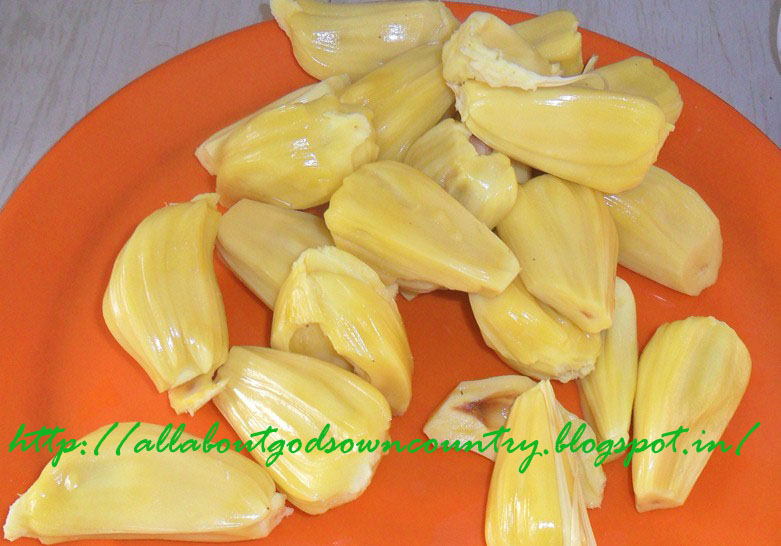
Flesh of Jackfruit (Varikka Chakka)
John C Marignelli who visited Kerala during the same period was surprised to see the length of plantain leaf. He recorded that he has never seen any leaf with length and surface area more than that of a plantain. Though a leaf is enough to fill a full dining table, he was surprised to know that only a single person can have food from a single leaf. He was also fascinated by the tastes of mangoes, jackfruit and different types of banana available here. Click here to know about significance of banana to Keralities.
Pan habits (Chewing betels) of Zamorins
Vasco Da Gama wrote an interesting description about Zamorin of Kozhikode when they met for the first time, and here it goes – A servant stands near Zamorin with a golden vessel (Kolambi in Malayalam) in hand and the ruler spits into it. Water to clean mouth is placed in a golden kindi (a bell type vessel with a small trunk to pour water, usually used in temples). Near his bed a small decorated box is placed in a golden stool. A Brahmin takes some kind of leaves and places some ingredients from the box to make a roll before giving it to Zamorin. The ruler accepts it, chews it and spits to the Kolambi.
Gama also describes about the betel leaves used to make pan. He says that the leaves resemble lime leaves in size, and Zamorin chews it always. When he spits off once, he will accept the next pan from the Brahmin and the process continues. Zamorin enjoys the pan juice only, and uses lime and aracanut as its key ingredients. When he chews everything combined, his mouth and teeth become red in colour and this practice gives him good breathing too.
Quite interesting!
Conclusion
While going through the descriptions of many historians and travellers, it’s pretty clear that spices and fruits have fascinated them a lot. Now living in 21st century AD in a fully literate state, things have changed a lot over the centuries.
Before I conclude, let me give some of the basic information about God’s own country
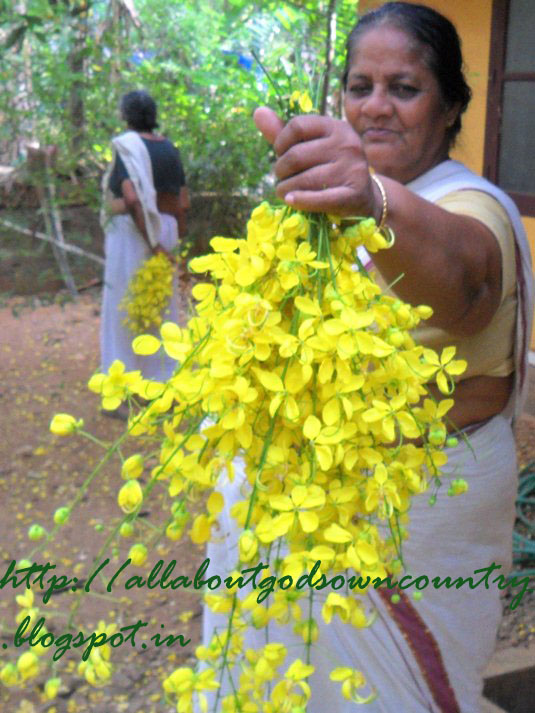
A Kerala lady in traditional sari carrying Konna Poo in Hands
Total Surface Area – 38863 Square Kilometer
Population – 3,34,06061 (as per 2011 Census)
Production revenue – 5,19,895 Crore Indian rupees
Official Animal – Elephant
Official Bird – Great Hornbill
Official Fish – Pearl Fish (Karimeen)
Official Tree – Coconut tree
Official Flower – Golden shower tree (Kani Konna used for Vishu celebrations)
Literacy rate – 94%
Biggest District – Palakkad
Smallest District – Alappuzha
Lok Sabha Seats – 20
Rajya Sabha Seats – 9
Kerala is celebrating its Diamond Jubilee Celebrations for next one year. Let us make this event a great success through our participation and co-operation. Definitely Kerala is one of the gifted places of the world to live a peaceful life.
Image source: Self and Wiki
Read a few more articles related to Kerala history, renaissance and the social/political changes over the years. Here is the page link. Click on the images in the gallery to read





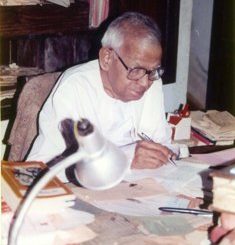
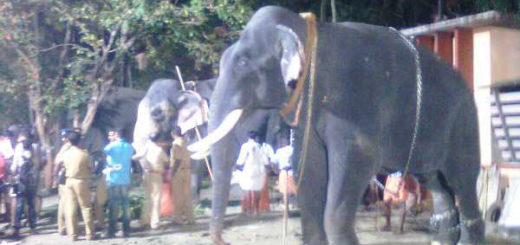
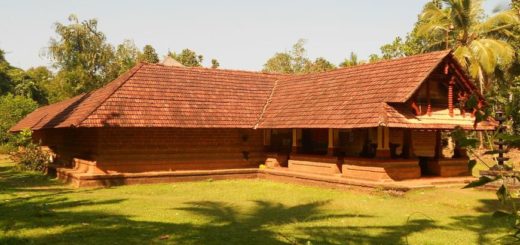








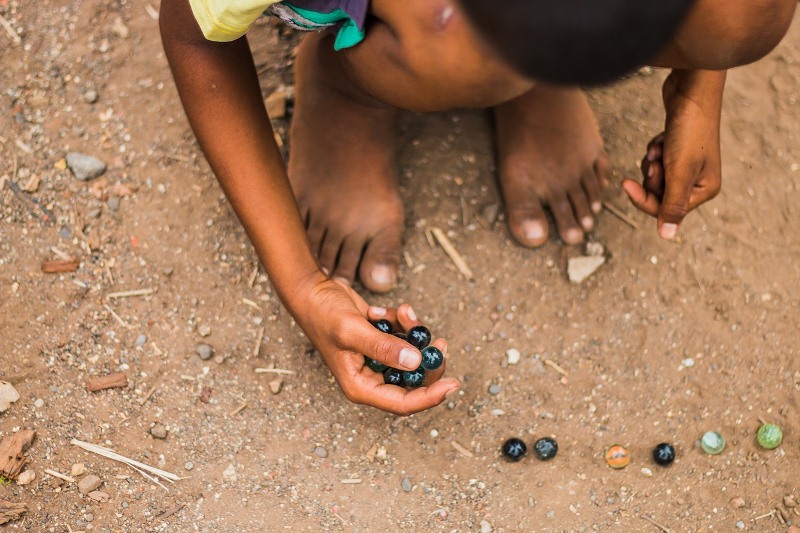

Recent Comments